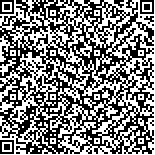| 摘要: |
| [目的]从空间角度分析郑州市乡村旅游资源的分布情况,同时深入探讨其驱动力,全面推动区域乡村旅游的发展以及乡村振兴战略的实施。[方法]以郑州市为例,通过洛伦兹曲线、最邻近指数、地理联系率和基尼系数等定量研究方法分析乡村旅游资源空间分布情况,进而选取24个驱动力指标,通过计算相关性系数对驱动力进行分析。[结果](1)郑州市乡村旅游资源空间分布较为集中,主要集中在惠济区、登封市、二七区等市区;(2)但各市区的乡村旅游资源空间分布存在一定的差异,其中中原区、二七区、金水区、惠济区、管城区、上街区的最邻近指数大于1,乡村旅游资源空间分布呈均匀型,巩义市、新郑市、登封市、新密市、荥阳市、中牟县、经开区、高新区、郑东新区、航空港区的最邻近指数小于1,乡村旅游资源空间分布呈凝聚型;(3)郑州市各区的地理联系率均在94%以上,基尼系数均小于0300,说明郑州市整体上乡村旅游资源空间分布较为均衡。(4)郑州市乡村旅游资源空间分布与24个驱动力指标均正向相关,其中乡村特有的景观、距离市中心的距离、乡村旅游基础设施、旅游村的数量、农民人均收入、民宿、停车场数量、道路标识系统的完整性和互联网覆盖率与乡村旅游资源空间分布的相关性显著(P<005)。[结论]乡村旅游空间分布受多个驱动力因素的影响,在不同发展时期有所差异,因此有必要优化调控驱动力系统,促进区域乡村旅游资源空间分布的合理化以及乡村旅游的健康持续发展。 |
| 关键词: 乡村旅游资源空间分布驱动力定量分析郑州市 |
| DOI: |
| 分类号:F5927; F327 |
| 基金项目:河南省社科联项目“社区参与乡村旅游的模式与机制研究”(SKL 2014-3303) |
|
| SPATIAL DISTRIBUTION AND DRIVING FORCE ANALYSIS OF RURAL TOURISM RESOURCES IN ZHENGZHOU CITY |
|
Chen Haibin
|
|
Zhengzhou Tourism College, Zhengzhou, Henan 450009,China
|
| Abstract: |
| From the perspective of space, this research analyzes the distribution of rural tourism resources in Zhengzhou city, and further explores its driving force to comprehensively promote the development of regional rural tourism and the implementation of rural revitalization strategy. Taking Zhengzhou city as an example, this research analyzed the spatial distribution of rural tourism resources through the quantitative research methods such as lorenz curve, nearest neighbor index, geographical contact rate and Gini coefficient, and then selected 24 driving force indicators to calculate the correlation coefficient. The spatial distribution of rural tourism resources in Zhengzhou city was relatively concentrated, mainly concentrated in Huiji district, Dengfeng city, Erqi district and other urban areas; however, there were some differences in the spatial distribution of rural tourism resources in various urban areas. including Zhongyuan district and Erqi district. The nearest neighbor index of Jinshui District, Huiji District, Guancheng District and Shangjie District is greater than 1, and the spatial distribution of rural tourism resources is uniform. Gongyi City, Xinzheng City, Dengfeng City, Xinmi City, Fuyang City, Zhongmu County, Economic Development The nearest neighbor index of district, high tech zone, Zhengdong new district and air port area is less than 1, and the spatial distribution of rural tourism resources is cohesive; and the geographical contact rate of each district of Zhengzhou is above 94%, and the Gini coefficient is less than 0.300, indicating Zhengzhou City Overall, the spatial distribution of rural tourism resources is relatively balanced. In addition, the spatial distribution of rural tourism resources in Zhengzhou City is positively correlated with 24 driving indicators, including the unique landscape of the village, the distance from the city center, the rural tourism infrastructure, the number of tourist villages, the per capita income of farmers, the number of homestays and parking lots. The correlation between the integrity of the road identification system and the Internet coverage rate and the spatial distribution of rural tourism resources was significant (P < 0.05). The spatial distribution of rural tourism is affected by multiple driving factors and varies in different development periods. Therefore, it is necessary to optimize the driving force system, promote the rationalization of spatial distribution of regional rural tourism resources and the healthy and sustainable development of rural tourism. |
| Key words: rural tourism resources spatial distribution driving force quantitative analysis Zhengzhou city |

